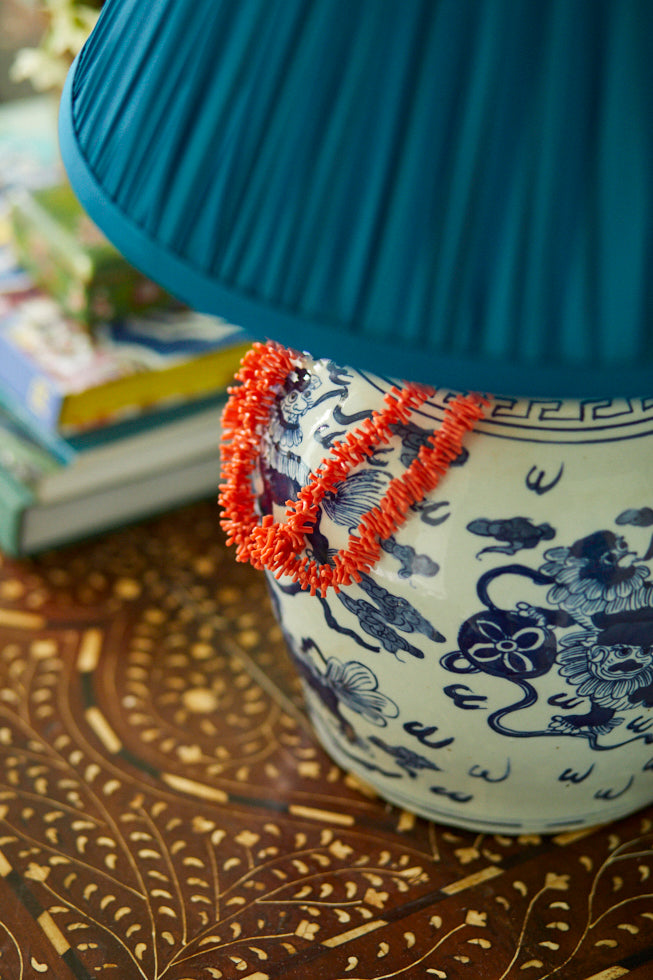Selecting the perfect lamp shade for your lamp base is all about proportions. Our guide will help ensure, with a few easy measurements, you find the right match. Tape measure at the ready…
Height
Measure the height of your lamp base from the bottom to the point where the bulb is located (the top of the ‘bulb holder’). This is crucial as it dictates the overall balance of the lamp.
Ideal height ratio: The height of the lamp shade should be about 70% of the height of the lamp base. E.g, if your lamp base is 30 cm tall, your lamp shade should be around 20cm tall.
You can also think about it in terms of thirds – the lamp base should take up around 2/3rds of the total height & the shade around one 3rd.
Width
Measure the widest part of the lamp base. This will help determine the appropriate width of the lamp shade.
Ideal width ratio: The width of the lamp shade should be roughly equal to the height of the lamp base - from the bottom to the bulb holder. So, if the base height is 30cm, the shade’s diameter should also be around 30cm.
Proportion & scale
A well-proportioned lamp shade complements its lamp base & the surrounding decor. Avoid shades that are too large or too small, as they can throw off the visual balance.
Test different shapes & styles, this way you can see what suits your lamp & the space’s aesthetic best.
Mix & Match
Think about how well the lamp shade matches the style of the lamp base. A traditional lamp base pairs well with a classic, tapered shade and a modern base might be best complemented by a sleek, straight-sided shade.
And consider the room's decor & the lamp's purpose. A reading lamp might benefit from a wider shade to spread more light, while an accent lamp might use a more decorative shade.
Look at the lamp from various angles & distances to ensure it looks good from all perspectives.
Fabric & Colour
The choice of fabric & colour of a lamp shade can affect the quality & direction of light. Light-coloured, translucent shades allow more light to diffuse, creating a soft glow. Darker, more opaque shades direct light downward, making them ideal for focused lighting.
Match or contrast the shade colour with the colour scheme. Neutral shades blend seamlessly, while bold colours have more impact.

